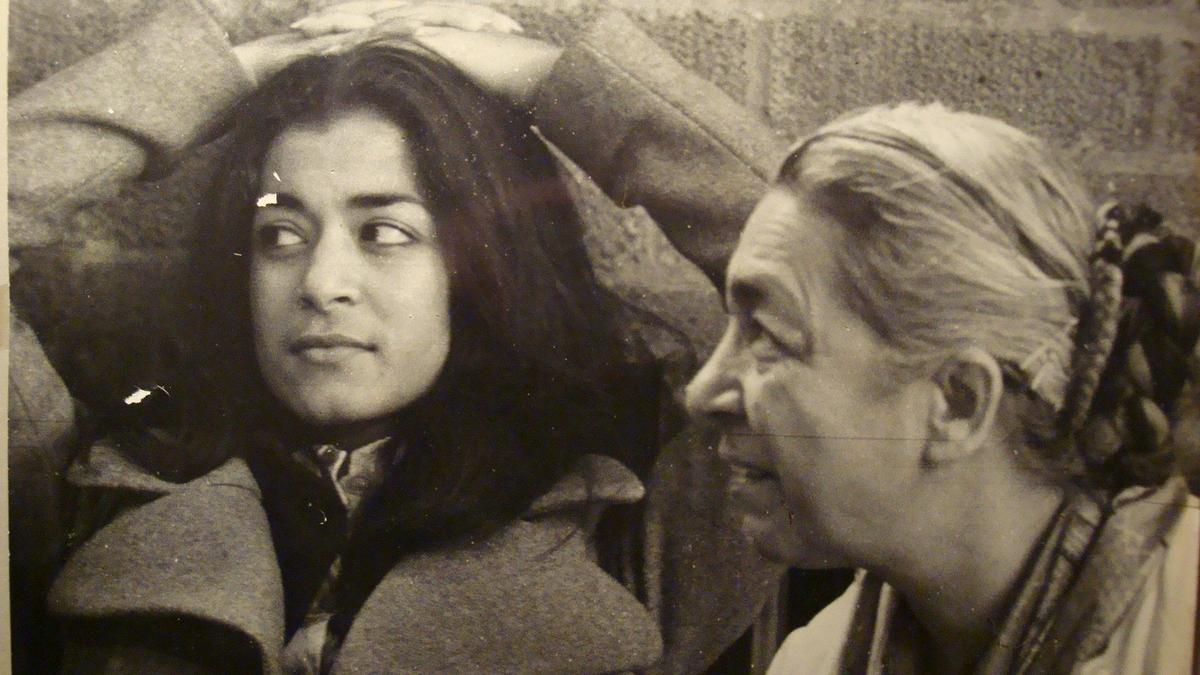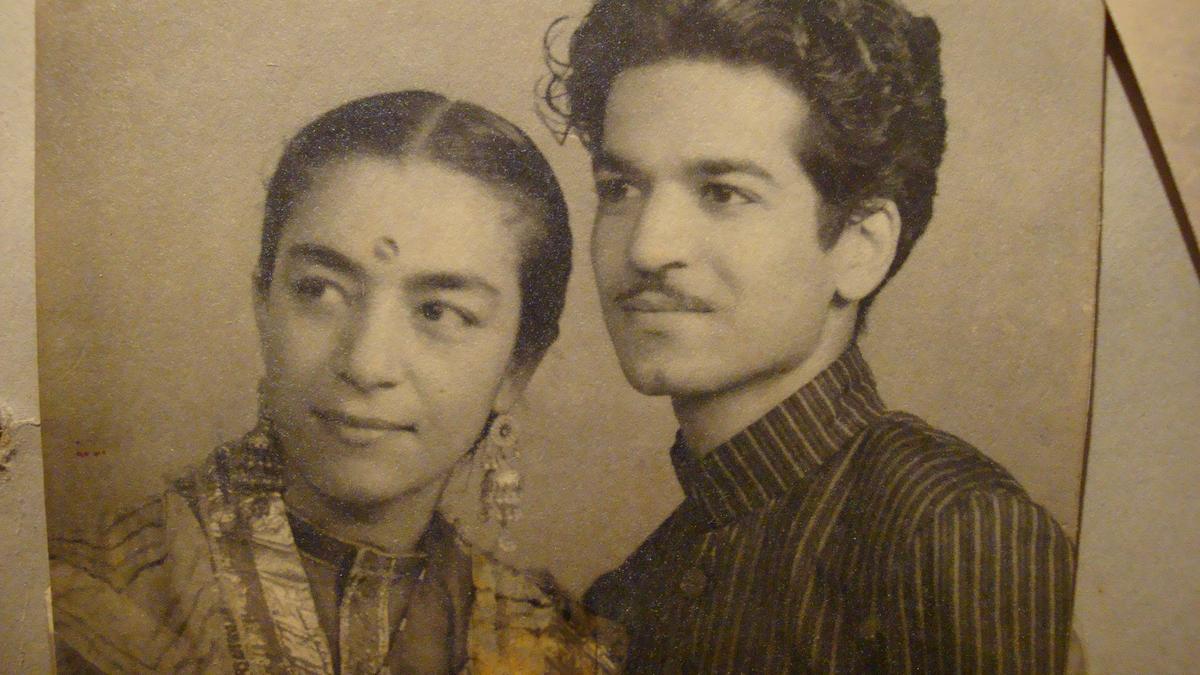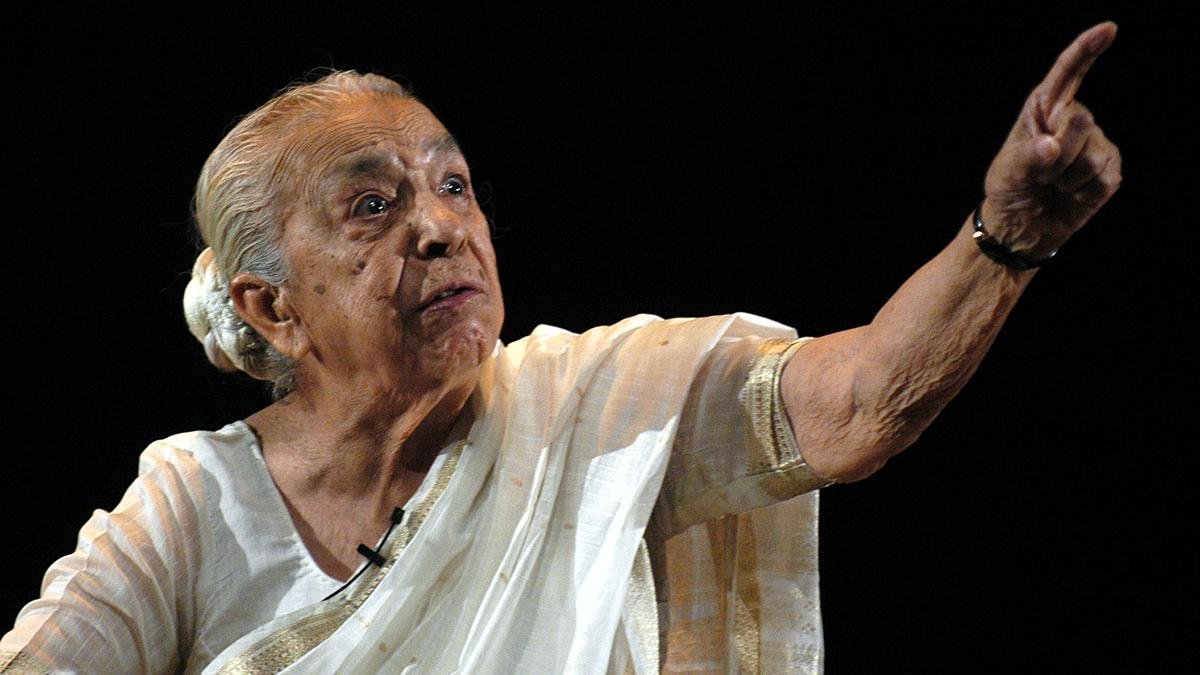
Zohra Segal during a Poetry recitation at Sangeet Natak Academy festival in New Delhi on August 28, 2005.
| Photo Credit: SUDERSHAN V
Zohra Segal (1912-2014) wore many hats with elan, and lived life on her own terms. Born Sahibzadi Zohra Begum Mumtaz-ullah Khan into an aristocratic Muslim family in Saharanpur, Zohra broke the glass ceiling at a time when it was unknown for women to defy norms and make choices.
Since her passing, her Odissi dancer-daughter Kiran Segal has been organising an annual tribute event dedicated to the arts. “I launched the festival in 2016. Art was what defined her. So the remembrance event is dedicated to her passion for acting and dance,” says Kiran. The Zohra Segal Trust, in collaboration with India International Centre, supported by the Raza Foundation is presenting its annual Zohra Segal Festival of the Arts this weekend at the IIC in Delhi.
Like in the earlier editions, this year’s line up is unusual too. The festival begins with Fado, the Portuguese-inspired music that Goans have adopted. It combines music and poetry. Fado was added to the UNESCO Intangible Cultural Heritage Lists in 2011. Meaning ‘fate’ or ‘destiny’ in Portuguese, Fado has a melancholic feel and its singers were traditionally never invited to perform. At the festival, Shrushti and Swaraa Prabhudessai will be accompanied by guitarists Franz Schubert Cotta and Sherwyn Correia.

Kiran with mother Zohra
| Photo Credit:
Courtesy: Kiran Segal
The second day features the journey of Lavani, the Maharashtrian folk dance, tracing its evolution from the 1800s, and narrated in the traditional storytelling format. This will be presented by Kali Billi Productions, Savitri Medhatul and will feature three dancers. Zohra Segal had spent several years in Mumbai, as dance director at Prithvi Theatre so the focus on a Maharashtrian dance form is appropriate. Apparently, when she and her husband Kameshwar had to leave Lahore in the 1940s due to unrest, they moved to Bombay, and Zohra approached Prithvi Theatre for a job, as her sister Uzra Butt worked there. Apparently Prithviraj Kapoor said that there was no job to suit her stature in the acting arena but since she was a trained dancer, was told to head the dance department. Kiran shared, “in those days they were called dance directors, not choreographers”.

Zohra and Kameshwar – a life in art
| Photo Credit:
Courtesy: Kiran Segal
Previous editions of the Zohra Segal Festival of the Arts have included theatre in different languages, qawwali, dastangoi and dance. A performance by Bengali ‘dhak’ artistes was well-received.
The curation of the festival reflects Zohra’s ability to draw attention towards unknown aspects of art and lend visibility to them. “She herself loved all the attention she got,” laughs Kiran.
Poetry was another area that Zohra excelled in; her recitation was always memorable. However, what many don’t know about Zohra is that she spent more than two decades in London, where she made waves on British television and films. When she came back to India, to Delhi to her daughter Kiran in 1987, she focussed more on Hindi films, acting till her death in 2014.
According to Kiran, “my mother considered herself a citizen of the world. She did her schooling at Queen Mary in Lahore, went to Germany to study under the dance pioneer Mary Wigman, was briefly based in Almora and associated with Uday Shankar’s group. After marrying in Lahore, she had to move to Mumbai.
The Zohra Segal Festival of the Arts is non-ticketed, and supported entirely by donations from well wishers.
Published – September 26, 2024 12:31 pm IST
The Zohra Segal Festival of The Arts
IIC
Delhi news
Source link



